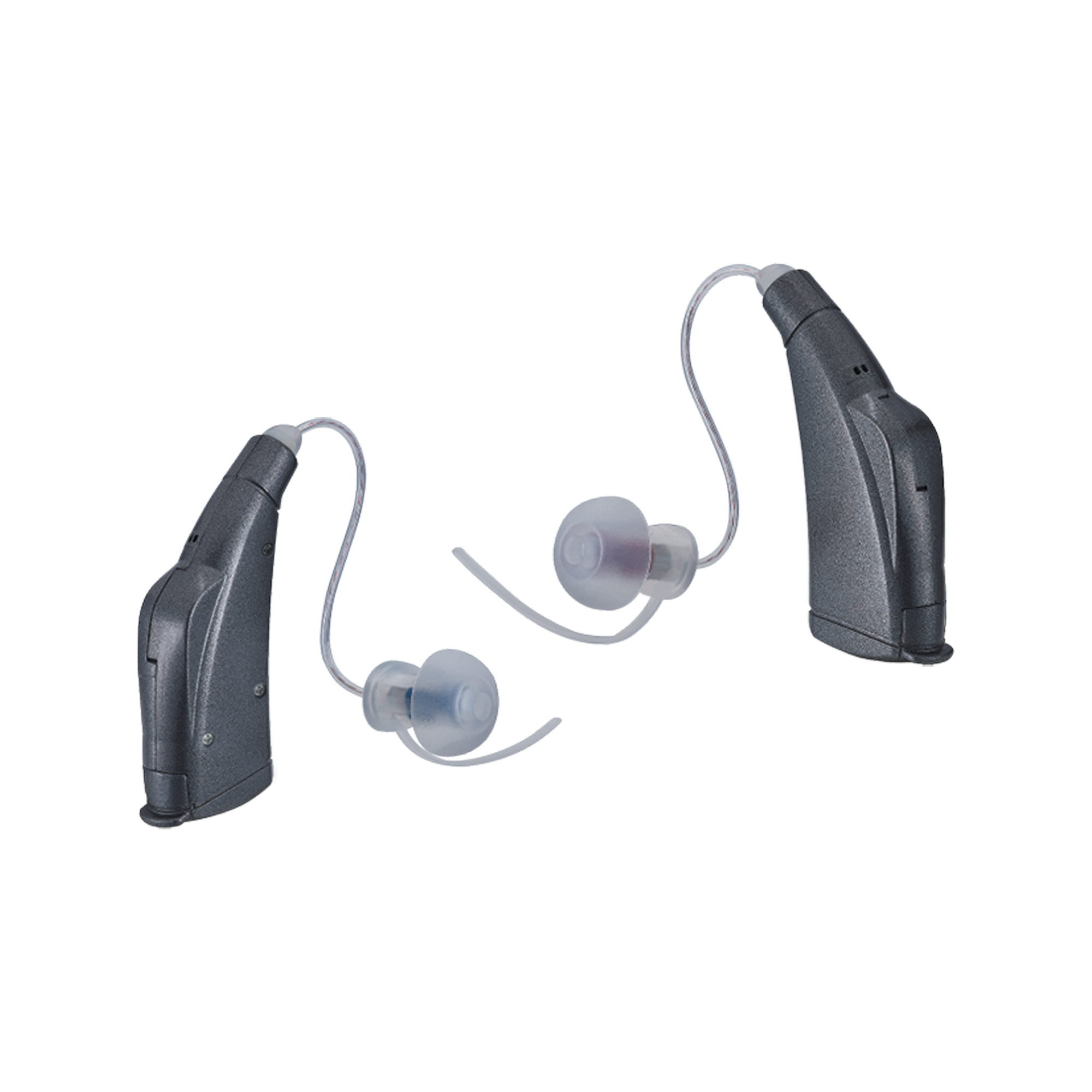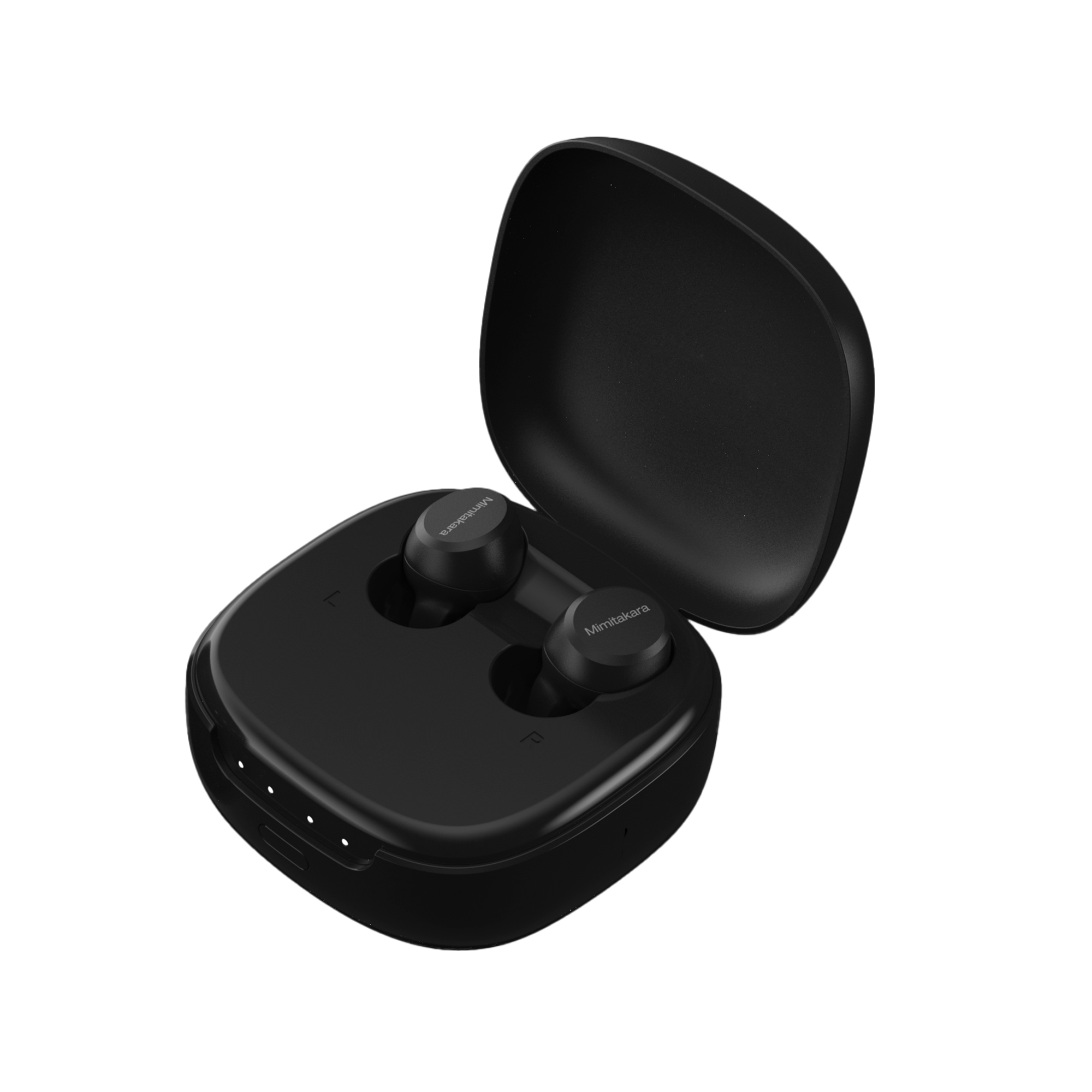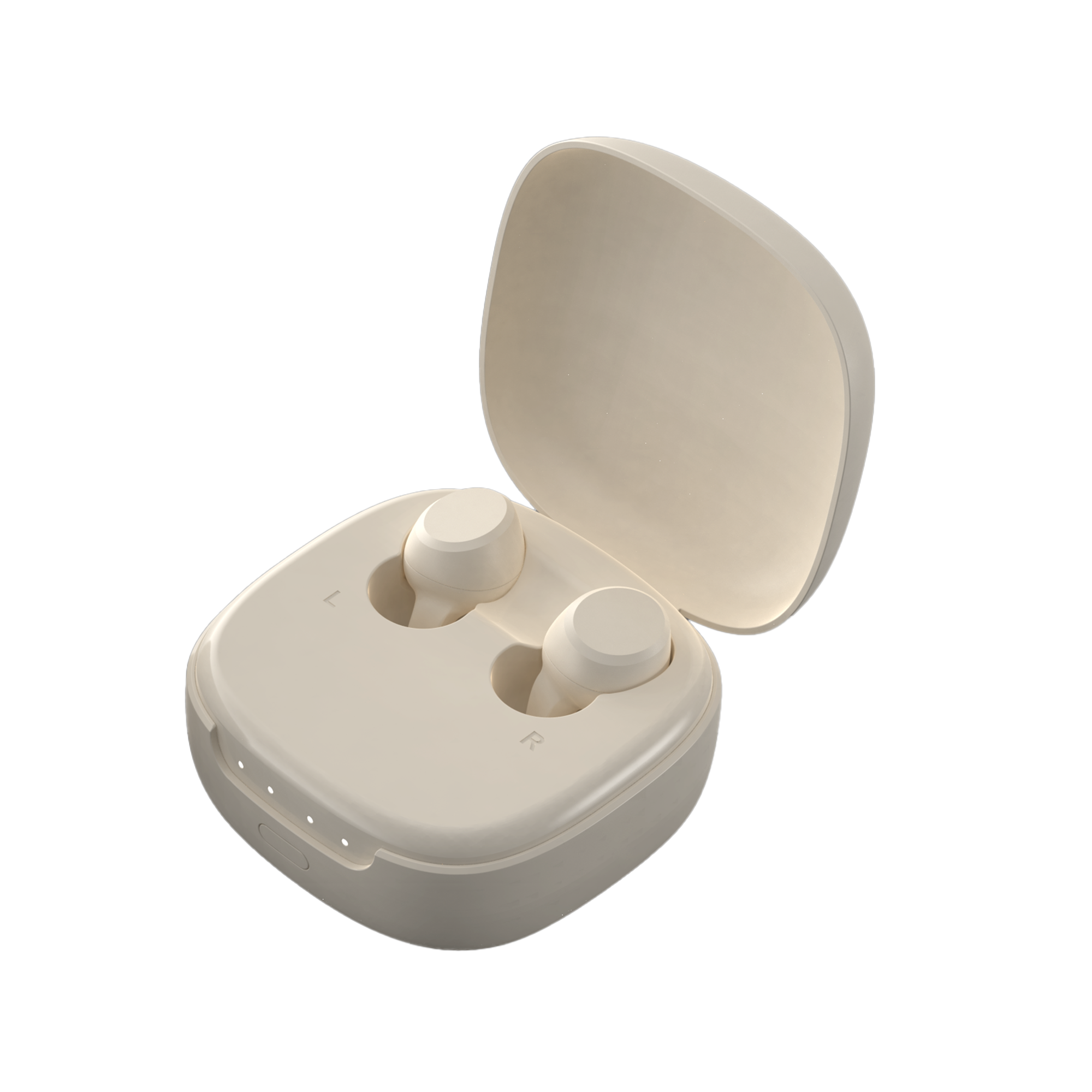Are you considering ITC hearing aids as a solution for your hearing loss symptoms? In-the-canal (ITC) hearing aids offer a discreet and custom-fit option for those seeking to improve their hearing and overall quality of life. With advanced features like Bluetooth connectivity and tinnitus management, ITC hearing aids provide a comprehensive hearing solution tailored to your unique needs.
In this article, we will explore the key benefits and potential drawbacks of ITC hearing aids, helping you make an informed decision about your hearing health. We'll discuss what sets ITC hearing aids apart from other styles, how they fit comfortably in your ear canal, and who can benefit most from this type of hearing aid. By understanding the advantages and considerations surrounding ITC hearing aids, you can work with your audiologist to determine if they are the right choice for your hearing journey.
What Are ITC Hearing Aids?
ITC hearing aids, or in-the-canal hearing aids, are a type of custom-fit hearing device that sits partially inside the ear canal. These hearing aids are designed to provide a discreet and comfortable fit while delivering clear sound amplification for individuals with mild to moderate hearing loss.
The compact size of ITC hearing aids makes them less visible than larger styles like behind-the-ear (BTE) or in-the-ear (ITE) devices. They are custom-molded to fit the unique contours of the user's ear canal, ensuring a secure and comfortable fit throughout the day.
Design Features
- Custom fit: ITC hearing aids are crafted based on an impression of the user's ear canal, allowing for a personalized fit that maximizes comfort and sound quality.
- Discreet appearance: The small size of ITC hearing aids makes them less noticeable than larger styles, which can be appealing for individuals who prefer a more discreet hearing solution.
- Directional microphones: Some ITC hearing aids feature directional microphones that help focus on sounds coming from the front, enhancing speech understanding in noisy environments.
- Wax guards: Built-in wax guards protect the hearing aid's internal components from earwax buildup, which can cause damage or decreased performance over time.
- Connectivity options: Select ITC hearing aids offer wireless connectivity to smartphones, tablets, or televisions, allowing users to stream audio directly to their devices for improved listening experiences.
While ITC hearing aids offer numerous benefits, they may not be suitable for everyone. The small size can make them more challenging to handle and adjust, especially for individuals with dexterity issues. Additionally, the compact design limits the power and battery life compared to larger hearing aid styles, making them less appropriate for those with severe to profound hearing loss.
Benefits of ITC Hearing Aids
ITC hearing aids offer numerous advantages for individuals with mild to moderate hearing loss. These custom-fit devices provide a discreet and comfortable solution while delivering enhanced sound quality and ease of use.
One of the primary benefits of ITC hearing aids is their discreet appearance. Designed to fit snugly within the ear canal, these devices are less visible than larger styles like behind-the-ear (BTE) or in-the-ear (ITE) hearing aids. This makes them an appealing choice for those who prefer a more inconspicuous hearing solution, allowing them to go about their daily lives with confidence.
In addition to their discreet design, ITC hearing aids are known for their comfort and ease of use. The custom fit ensures that the device sits securely and comfortably in the ear canal, reducing the risk of irritation or discomfort. Many modern ITC hearing aids also offer wireless connectivity to smartphones, tablets, or televisions, enabling users to stream audio directly to their devices for an enhanced listening experience.
ITC hearing aids are also equipped with advanced features that improve sound quality and clarity. Some models feature dual microphones, which help focus on sounds coming from the front while reducing background noise. This directional microphone technology is particularly beneficial in noisy environments, such as restaurants or social gatherings, where understanding speech can be challenging.
Furthermore, ITC hearing aids often come with built-in wax guards that protect the device's internal components from earwax buildup. This feature not only prolongs the hearing aid's lifespan but also ensures consistent performance over time.
| Benefit | Description |
| Discreet Appearance | ITC hearing aids are less visible than larger styles, making them an ideal choice for those who prefer a more inconspicuous hearing solution. |
| Comfort and Ease of Use | The custom fit ensures a secure and comfortable fit within the ear canal, reducing irritation and discomfort. Many ITC hearing aids also offer wireless connectivity for enhanced user experience. |
| Enhanced Sound Quality | Advanced features like dual microphones and directional microphone technology improve sound quality and clarity, particularly in noisy environments. |
| Built-in Wax Guards | Wax guards protect the hearing aid's internal components from earwax buildup, prolonging the device's lifespan and ensuring consistent performance. |
While ITC hearing aids provide numerous benefits, it's essential to consult with an audiologist to determine if they are the right choice for your specific hearing needs and lifestyle. With the right device and proper fitting, ITC hearing aids can significantly improve your hearing and overall quality of life.
Potential Drawbacks of ITC Hearing Aids
While ITC hearing aids offer numerous benefits, there are some potential drawbacks to consider before choosing this style of device. These limitations may influence your decision and should be discussed with your audiologist to determine if ITC hearing aids are the best fit for your needs.
Limited Power and Features
Due to their compact size, ITC hearing aids may not be suitable for individuals with severe to profound hearing loss. The smaller design limits the power and battery life compared to larger hearing aid styles, such as behind-the-ear (BTE) devices. Additionally, advanced features like directional microphones and wireless connectivity may be more challenging to incorporate into ITC hearing aids due to space constraints.
Maintenance and Cleaning
ITC hearing aids require regular maintenance and cleaning to ensure optimal performance and longevity. The close proximity of the device to the ear canal exposes it to more earwax and moisture, which can lead to damage or decreased performance over time. Users must be diligent in their cleaning routine and replace wax guards as needed to prevent buildup from interfering with sound quality.
| Cleaning Step | Frequency |
| Wipe device with soft, dry cloth | Daily |
| Replace wax guards | As needed (typically every 1-2 weeks) |
| Professional cleaning by audiologist | Every 3-6 months |
Feedback Issues
Feedback, which is characterized by a whistling or squealing sound, can be more common in ITC hearing aids compared to other styles. This is due to the close proximity of the microphone and receiver within the compact design. Proper fitting and regular adjustments by an audiologist can help minimize feedback issues.
Earwax Build-up
The placement of ITC hearing aids within the ear canal makes them more susceptible to earwax buildup. Earwax can clog the device's openings, leading to reduced sound quality or even device failure. In addition to regular cleaning, users may need to have their ears professionally cleaned more frequently to prevent excessive earwax accumulation.
- Monitor earwax buildup regularly
- Use earwax removal tools as directed by your audiologist
- Schedule professional ear cleanings as needed
While these potential drawbacks may seem daunting, many of them can be effectively managed through proper maintenance, regular check-ups with your audiologist, and open communication about any issues you experience. By understanding the limitations of ITC hearing aids and taking proactive steps to address them, you can ensure a more successful and satisfying hearing aid experience.
Who Should Consider ITC Hearing Aids?
ITC hearing aids are a popular choice for individuals seeking a discreet and custom-fit hearing solution. However, not everyone is a suitable candidate for this type of hearing aid. When considering ITC hearing aids, it's essential to evaluate your hearing loss level and lifestyle needs to determine if they are the right fit for you.
Suitability for Hearing Loss Levels
ITC hearing aids are typically recommended for individuals with mild to moderate hearing loss. Due to their smaller size, they may not provide enough amplification for those with severe to profound hearing loss. If you have more significant hearing loss, your audiologist may suggest alternative styles, such as behind-the-ear (BTE) or in-the-ear (ITE) hearing aids, which offer greater power and features.
It's also important to note that ITC hearing aids may not be the best option for individuals prone to recurrent ear infections. The close proximity of the device to the ear canal can potentially exacerbate these issues.
Lifestyle Considerations
When deciding if ITC hearing aids are right for you, consider your daily activities and lifestyle preferences. ITC hearing aids offer several benefits that cater to specific needs:
- Discretion: If you prioritize a discreet hearing solution, ITC hearing aids are an excellent choice. Their small size makes them less visible than larger styles, allowing you to wear them confidently in various settings.
- Comfort: ITC hearing aids are custom-molded to fit the unique contours of your ear canal, providing a comfortable and secure fit. This is particularly beneficial for individuals who wear hearing aids for extended periods.
- Compatibility with phones: ITC hearing aids are easy to use with telephones due to their placement and size. Many modern devices also offer Bluetooth connectivity, allowing seamless integration with smartphones and other digital devices.
However, there are some potential drawbacks to consider:
| Drawback | Description |
| Dexterity issues | The small size of ITC hearing aids can make them challenging to handle, especially for individuals with limited dexterity. Inserting, removing, and adjusting the devices may prove difficult. |
| Maintenance | ITC hearing aids require regular cleaning and maintenance to prevent earwax and moisture buildup, which can impact performance. Their size can make this process more challenging compared to larger styles. |
| Battery life | Due to their compact size, ITC hearing aids typically have shorter battery life than larger models. Frequent battery changes may be necessary. |
Ultimately, the decision to choose ITC hearing aids should be made in consultation with your audiologist. They can assess your hearing loss, discuss your lifestyle needs, and recommend the most suitable hearing aid style for your unique situation. By carefully considering these factors, you can ensure that you select a hearing aid that enhances your hearing experience and seamlessly integrates into your daily life.
Conclusion
ITC hearing aids offer a discreet, comfortable, and custom-fit solution for individuals with mild to moderate hearing loss. With their advanced features, such as directional microphones and wireless connectivity, ITC hearing aids provide enhanced sound quality and ease of use in various listening environments. However, it's essential to consider factors such as hearing loss level, lifestyle needs, and potential drawbacks like limited power and maintenance requirements before choosing this style of hearing aid.
Ultimately, the decision to select ITC hearing aids should be made in consultation with your audiologist. By carefully evaluating your unique hearing needs and preferences, you can determine if ITC hearing aids are the right choice for you. With proper fitting, maintenance, and regular check-ups, ITC hearing aids can significantly improve your hearing experience and overall quality of life.
FAQ
What are the advantages of using ITC hearing aids?ITC (In-the-Canal) hearing aids offer several benefits. They are designed to fit snugly inside the ear canal, making them highly discreet and nearly invisible when worn. They are comfortable and can be adjusted for a personalized fit, enhancing the user's experience.How effective are ITC hearing aids?While ITC hearing aids are beneficial for their discreet size and comfort, they have limitations due to their small size. They lack space for larger batteries and telecoils, which limits their power and volume capabilities. Consequently, they are not typically recommended for individuals with severe hearing loss or for children.What are the disadvantages of using ITC hearing aids?The small size of ITC hearing aids presents several challenges. They can be difficult to handle, especially when changing batteries, and there is a higher risk of dropping and damaging them. Due to their diminutive size, individuals with dexterity issues may find them particularly challenging to manage.
















